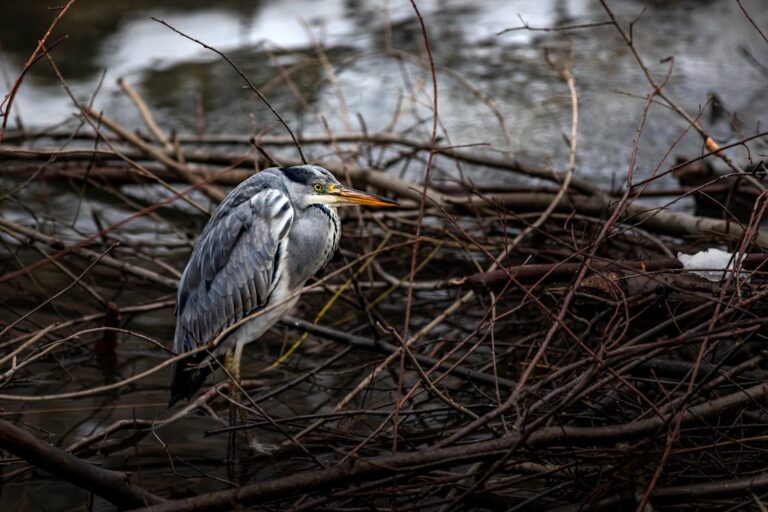Herons (Ardeidae)
Herons are easily recognizable due to their long legs and necks, which allow them to wade and fish in shallow waters. Their bills are long, slender, and strong, adapted for catching fish and other aquatic creatures.
- Size: They range from medium to large, depending on the species. Some species can reach up to 1 meter in height.
- Color and Plumage: Their plumage varies from white and gray to blue, black, and brown, with some species displaying striking colors and patterns.
- Behavior: Herons are typically solitary or found in small groups. They are known for their ability to stand still for extended periods, waiting for the perfect moment to strike at their prey.
- Voice: While not very vocal, herons produce loud and harsh calls, often heard as squawks.
Habitat and Distribution
Herons are widely distributed across the globe, avoiding only the coldest regions. They prefer wetlands, rivers, lakes, marshes, and coastal areas. Some species are migratory, moving between breeding and wintering areas.
Diet
Herons primarily feed on fish, amphibians, crustaceans, and insects. Some species also eat small mammals and birds. Their long bills are perfect for hunting in aquatic environments, where they use a sudden strike to catch their prey.
Reproduction
Herons nest in trees, bushes, or reed beds near water. Their nests are made from twigs and plant materials. They typically lay 3-5 eggs, with incubation lasting around 20-30 days. Both parents participate in incubating the eggs and feeding the chicks until they are strong enough to fly and feed themselves.
Ecological Importance
Herons play a crucial role in ecosystems by maintaining the balance of aquatic populations and serving as indicators of wetland health. They are an integral part of biodiversity, and their presence is vital for monitoring the environmental condition of the areas they inhabit.


